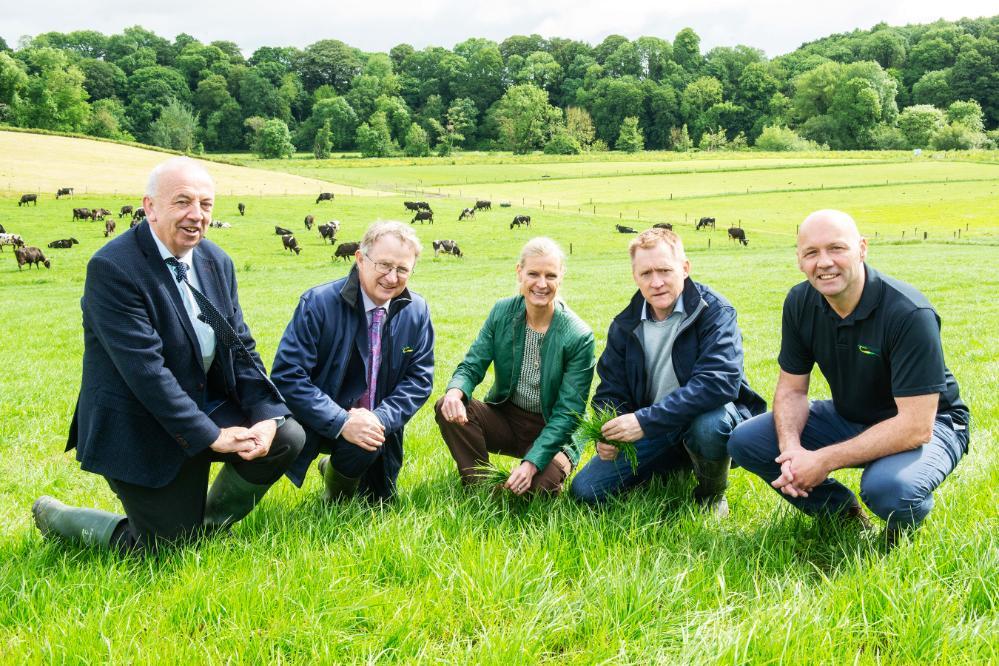29 May 2024
Improving Water Quality with Trees on Farms
A Woodland for Water event is taking place at the Teagasc Moorepark Research Centre, today, Wednesday, 29 May. The event is focused on enhancing water quality and wider farm sustainability.

The event highlights a number of sustainability measures implemented in Moorepark Research farm, with a particular focus on planting trees in a strategic part of the farm. In 2023, a co-operative approach by Teagasc’s Cork East advisory region, the forestry development department and Moorepark management established 3 hectares (ha) of new native woodland and undisturbed water setbacks along the Funshion river, which flows alongside the Moorepark Research farm in Fermoy.
Today’s novel event was organsied by Teagasc Forestry Development Department, and the Agricultural Sustainability Support and Advisory Programme (ASSAP), and hosted by the Animal and Grassland Research & Innovation Centre, Moorepark, Fermoy, County Cork.
Attendees were welcomed to this event in Cork by Minister of State Pippa Hackett and Director of Teagasc, Professor Frank O’Mara. The attendees experienced at first hand, how this woodland measure is working with a suite of other on-farm initiatives to greatly enhance Moorepark’s sustainability credentials. Such initiatives include the use of grass/clover swards, achieving optimum pH, fertiliser formulation, low emission slurry spreading, extended grazing, effective manure management and an extensive new hedgerow establishment (8km).
“Speaking at the opening, Minister of State Pippa Hackett emphasised how “the tree planting measures in Teagasc Moorepark farm reflect the exciting options available under the new Forestry Programme 2023- 2027 to protect and enhance water quality in a way that is synergistic for agriculture and other land uses. I would strongly encourage farmers to look both at the financial incentives and the environmental benefits of establishing riparian woodlands, and to speak to your local Teagasc forestry adviser about planting native woodlands for water under the Native Tree Area Scheme, or indeed at a larger scale through the Forests for Water option under the Forestry Programme.”
Professor Frank O’Mara stressed how the event “showcases Teagasc’s multi-faceted approach to whole farm planning, demonstrating the important role of trees in contributing to farm sustainability and maintaining and enhancing water quality. This complements the range of on farm measures highlighted in the Teagasc Marginal Abatement Cost Curve (MACC) to reduce greenhouse gas emissions”.
Tom Houlihan, Teagasc Forestry Department said; “many farms have areas that would be suitable for planting trees, particularly if it can be incorporated with a phosphate flow pathway to help break the pathway of overland flow”. The tree planting measures showcased today can be a highly effective measure in breaking the pathway between the source of nutrients and the receiving waterbody.
Outdoor presentations from Teagasc Moorepark researchers, the Forestry Development Department, ASSAP & LAWPRO, the Environment and Signpost Programmes underlined the wide range of significant water-related ecosystem services and whole farm planning potential provided by new native woodland and undisturbed water setbacks along the riverbank.
Farm benefits from this woodland development include the reduction in sediment mobilisation and runoff into the adjacent river; the interception of nutrient runoff into the watercourse; riverbank stabilisation and restoration, in addition to increases in native woodland biodiversity, carbon sequestration and habitat linkage within the wider Moorepark landscape.
